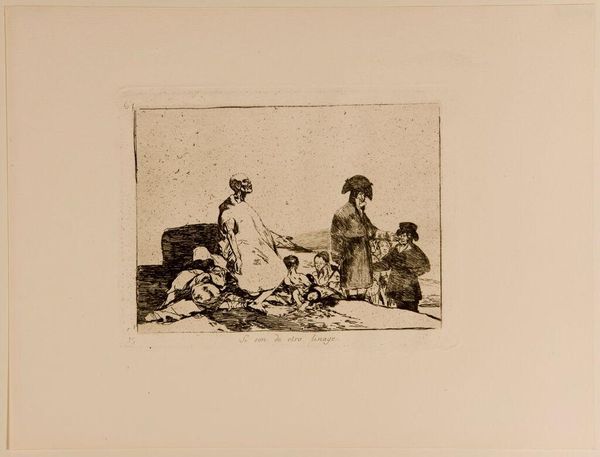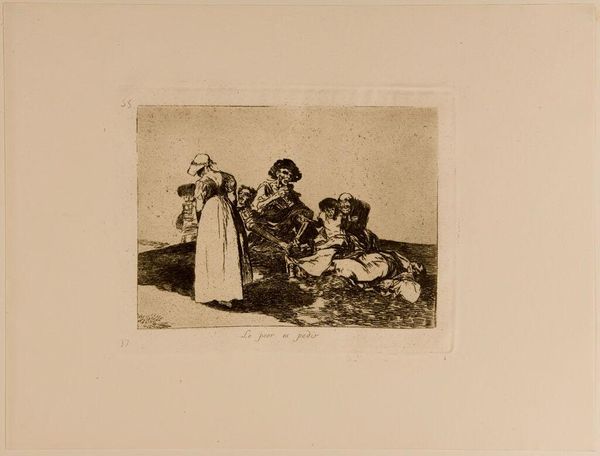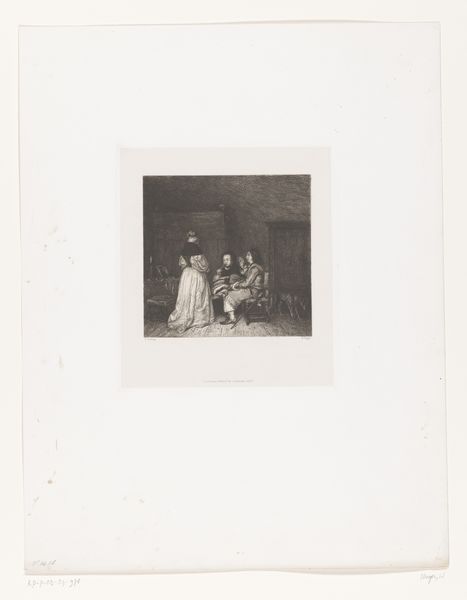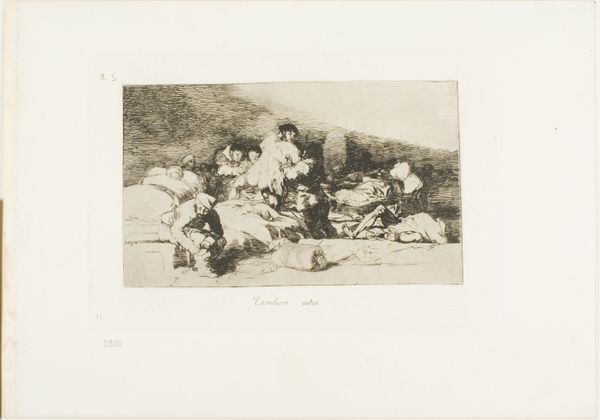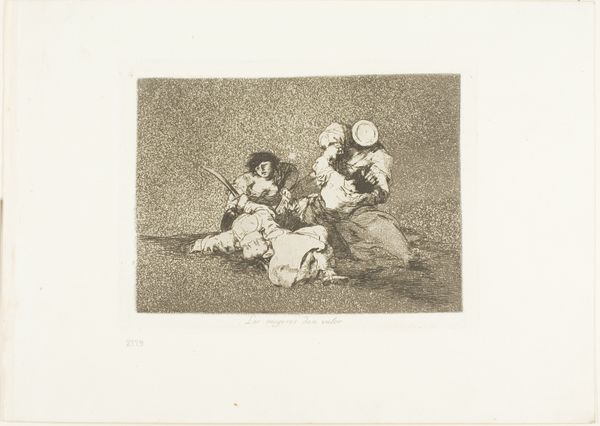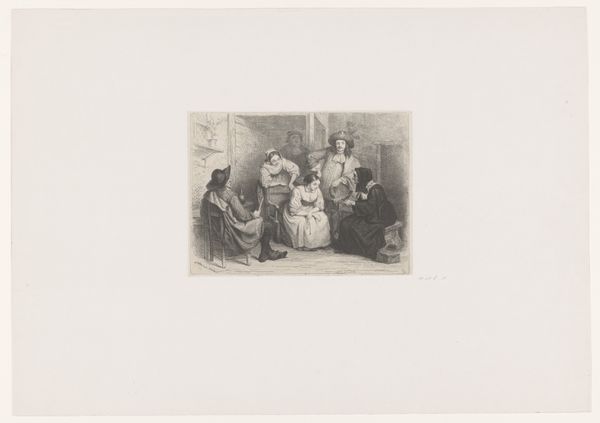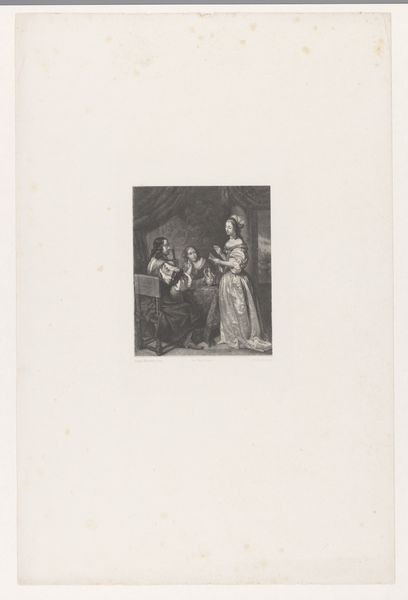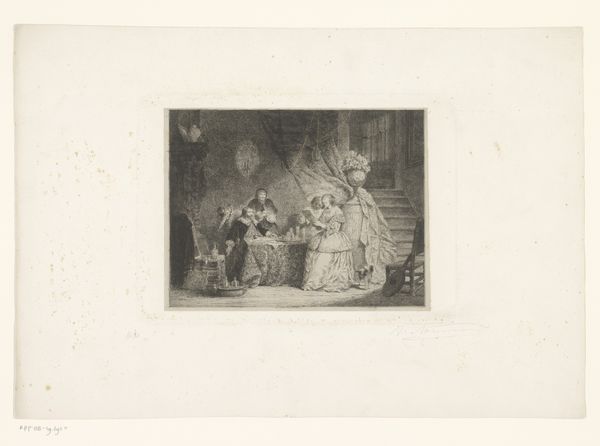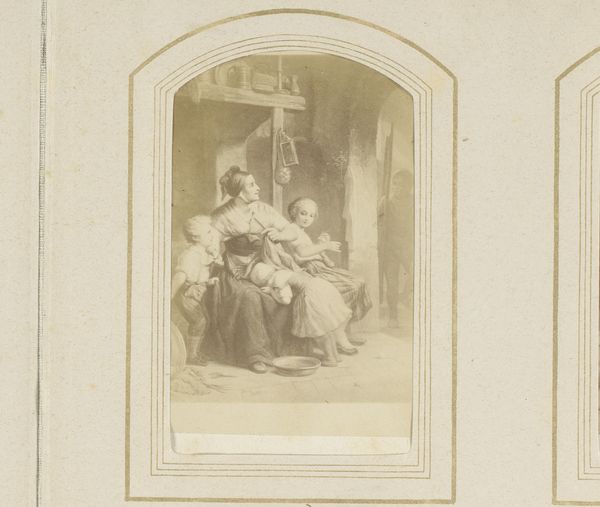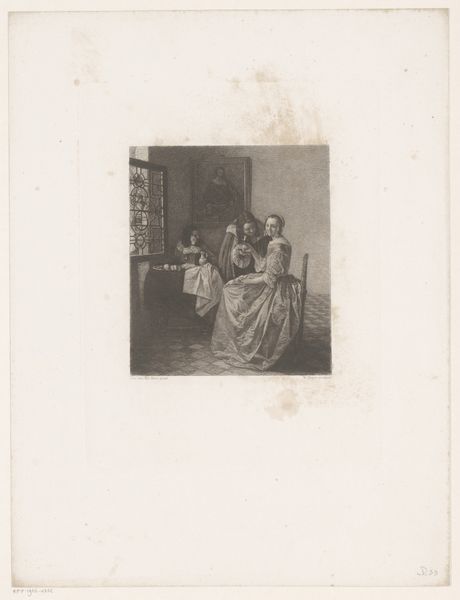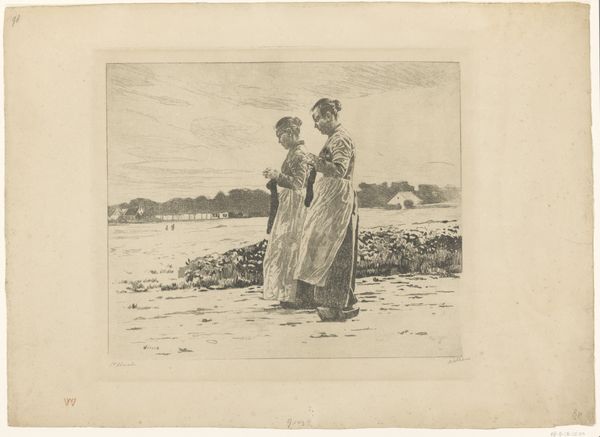
Perhaps they are of another breed, plate 61 from The Disasters of War Possibly 1812 - 1863
0:00
0:00
drawing, print, etching, paper
#
drawing
# print
#
etching
#
war
#
figuration
#
paper
#
romanticism
#
history-painting
Dimensions: 133 × 185 mm (image); 154 × 205 mm (plate); 240 × 339 mm (sheet)
Copyright: Public Domain
Editor: So, this is "Perhaps they are of another breed, plate 61 from The Disasters of War," made by Francisco de Goya. It’s an etching printed on paper, dating somewhere between 1812 and 1863. The stark contrast and grim subject matter create a really unsettling feeling. What aspects of the print stand out to you most? Curator: I'm immediately drawn to the etching process itself. Think about the labor involved in creating this image. Goya painstakingly used acid to bite into a metal plate, controlling the lines, the tones, the shadows that conveyed this horror. He utilized readily accessible material. Consider how the relatively low cost of prints democratized access to powerful, potentially subversive imagery. Editor: That’s a great point about access and distribution. Curator: Exactly. And we must consider paper itself— where it comes from? Who produced it? The lines etched and impressed upon paper bring history to the present. Notice how the figures are rendered, and their material condition. Is Goya contrasting wealth and class against emaciated beings or perhaps highlighting the universality of suffering in war? How does his style engage with ideas from the period? Editor: I see what you mean, thinking about the materials definitely adds another layer to the print's meaning beyond just its depiction of war. Curator: Precisely. Looking at the materials and the method of production grounds the work within a specific historical and economic reality, emphasizing the widespread repercussions of war and potentially underscoring Goya's social critique through his careful treatment of both subject and medium. Editor: It makes you think about the cost of art, both literally and figuratively, doesn't it? Thanks, that was insightful! Curator: Indeed, and it deepens our understanding of art's role as a product and a commentary.
Comments
No comments
Be the first to comment and join the conversation on the ultimate creative platform.
